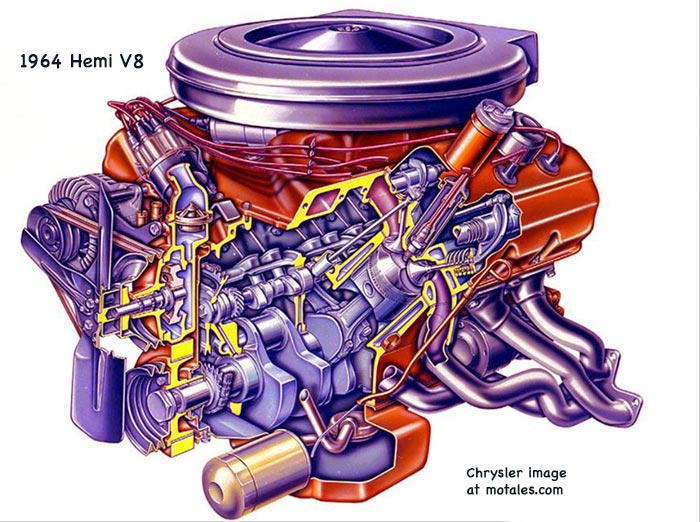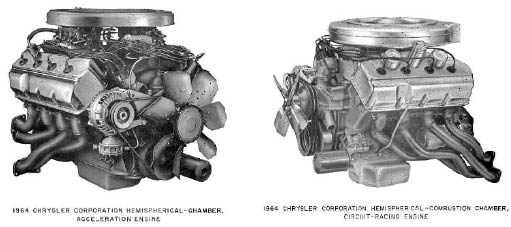Created solely for racing, the famed 426 Hemi was a cross between Chrysler’s first V8 engines, which had hemispherical heads, and the big Cross-Ram Wedge engines which were winning on the street but failing in NASCAR—the company’s second completely new V8 design.

The engine people believed that the wedge engines would have an edge if they could be topped with free-breathing hemispherical-chamber heads. That design was hard to build, heavy, expensive, and bulky, which was why Chrysler had finally dropped it; but there was no better way to have huge valves and efficient combustion chambers. In the 1950s, Chrysler had put polyspherical heads onto the original Hemi blocks; with the later LA series engines, they put wedge heads onto the originally-Hemi blocks. Why not do the reverse?
Executives approved the engineers’ ideas in 1963. Head of engine design Willem Weertman put their best engine designer onto the program, “with Bob Rareya and me looking over his shoulder.” Though some changes to the block were needed, they were able to wed new hemispherical-chamber heads with a modified RB-engine block—using the same included valve angle as the 1951 Chrysler Hemi. As with the old 331 to 392 “dual rocker” Hemis, the new heads were massive, resulting in the nickname “elephant engine.”
Key to this project were Tom Hoover, now called “father of the Hemi,” and Don Moore. Hoover also worked on the Slant Six Hyper-Pak, which brought the new Valiant first through seventh place in the only NASCAR compact-car race.

The new 426 Hemi was a relatively simple design, with a single cam, but it still allowed intake valves to grow from 2.08 inches to 2.25 inches, while exhaust valves went from 1.74 to 1.95 inches; even the lift was increased, from 0.450 to 0.490 inches.
NASCAR authorities let the Hemi dominate 1964, but it was banned from 1965 races because it was hardly a stock engine. The company then needed to make it “streetable,” resulting in the Street Hemi. Changes were not minor: the engine had to run with relatively little maintenance, last longer, and start and run well no matter what the weather was. It was an extremely expensive engine, even before the rest of the car was beefed up to make it reasonably safe. Chrysler may have lost money on it, even with its $900 premium (at a time when cars typically sold at roughly $3,000). The official rating was 425 horsepower (gross) and 490 pound-feet of torque, on premium fuel; net power ratings, as of 1971, were 350 hp and 390 lb-ft. (Home viewers may notice that the current 5.7 Hemi actually beats the 426 Street Hemi’s official numbers, in a sign of how much times have changed.)
See more of the Hemi story at Motales.